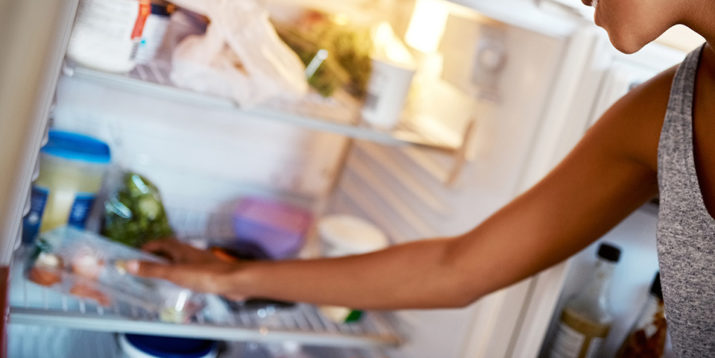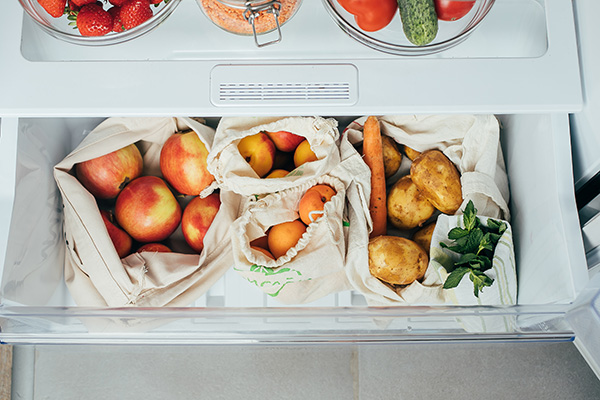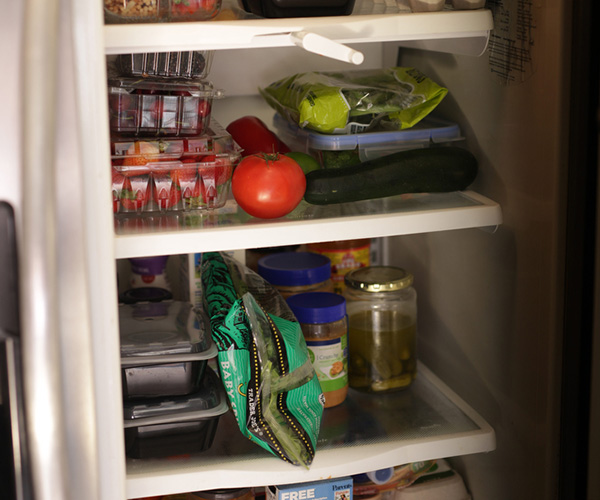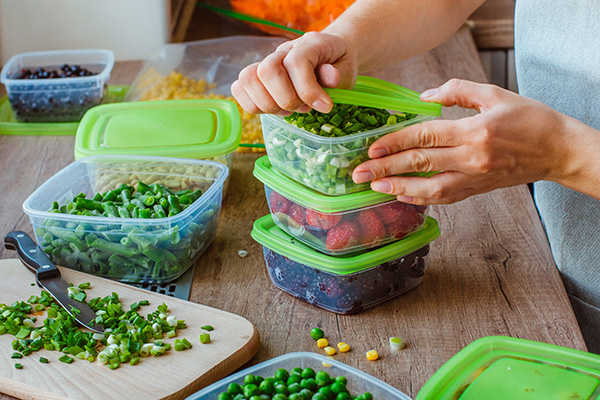How to Organize Your Fridge Like a Pro

In the U.S., 30% to 40% of the food supply gets thrown away, according to the Food and Drug Administration.
At home, you can reduce food waste by simply organizing your fridge.
A clean, organized refrigerator is an often-overlooked healthy eating habit.
When your fridge is a mess, you may end up snacking on chips because you can’t find the carrot sticks and hummus you planned to eat — or wasting a pricey carton of cage-free eggs that you bought with the intention of making healthy breakfasts.
“A well-organized fridge can reduce waste and ultimately save you money,” says Beth Stark, R.D.N., L.D.N.
Learning how to organize your fridge saves you time when cooking and snacking.
A tidy refrigerator is an efficient one — and could make you a better cook, too. (Think: It’s like fridge feng shui.)
Here are nine simple fridge organization ideas.

1. Give it a good clean
To get a fresh start on fridge organization, empty it out, recommends Hailey Gorski, R.D.
“This way you can wipe down the shelves and toss anything that is expired — or not serving you and your health goals anymore.”
Goodbye, week-old takeout and half-eaten jar of marshmallow cream from who knows when.
Hello, space to actually store the healthy meals you prepped!
2. Check the temperature
“Make sure your fridge temp is at or below 40 degrees and avoid overfilling it, because it can hamper air flow and disrupt the temperature control,” explains Stark.
The temperature control panel in your fridge likely lists the ideal setting, and you can pick up a small thermometer to keep close tabs on the temp.
Your refrigerator shouldn’t resemble a game of Tetris.
Keep it about two-thirds full for optimal air flow and to provide ample space to see what’s inside.
This will save major time when you’re whipping up a quick dinner.

3. Divide and conquer the fridge
Group like items together to make it easier to find them. While produce and meat often have their own, clearly labeled spaces, what about the rest of your healthy eats?
“Clear bins are a great way to divide up your food while still being able to see everything,” says Gorski.
You could have one bin for healthy breakfasts, one for tomorrow’s prepped meals, and another for leftovers.
Or, assign a bin to each person you live with.
4. Use storage containers and bags
Meal prep containers and bags are great for speeding up weekday cooking.
They also help you organize your fridge without overstuffing it. Glass bowls or plastic containers with lids are tidier, sturdier alternatives to plastic- or foil-covered plates.
Clear containers make it harder to overlook leftovers, too.
Adding a piece of masking tape with the contents and an “eat-by” date written on it is also helpful.

5. Keep ready-to-eat foods up front
“On the upper shelves and those in your direct line of sight, place grab-and-go foods like pre-cut veggies, hard-boiled eggs, cubed cheese, and yogurt for snacking or efficient meal prep,” says Gorski.
What you see is what you’ll want to eat. This tip is a win-win since you’ll see the “good” stuff first, and it won’t go to waste!
6. Separate fruits and veggies
“The purpose of the crisper drawer is to keep fruits and vegetables at maximum freshness,” says Gorski.
However, fruits and veggies don’t always mix because some spoil faster than others.
Some refrigerators have dual crisper drawers, one with low humidity and another with high humidity, which is a perfect guide for how to organize your fridge.
Keep veggies in your high-humidity drawer, and ripe fruit and mushrooms in your low-humidity one.
If you only have one compartment, keep items that wilt in the drawer and place fruit in a colander or other container elsewhere in the fridge.
7. Don’t forget about the door
Even though many fridge doors have designated compartments for milk and eggs, ignore them when you’re deciding how to organize your fridge.
Instead, store those items on a lower shelf.
“The door is typically the warmest part of the fridge, so store condiments in it,” recommends Gorski.
You can also store nut butters there, along with sparkling water and other beverages for easy access.
8. Store perishables on the bottom shelves
Keep raw meat, poultry, and seafood on the bottom shelves.
That’s the coolest part of your fridge, and you’ll avoid cross-contamination of prepared foods, recommends Gorski.
Wipe up spills immediately to prevent bacteria growth.
To be extra safe, store these foods in a clear bin, and wash it with hot, soapy water at least weekly.
9. Check dates and rotate
“Follow the ‘first in, first out’ rule, which means rotating highly perishable foods — like milk, eggs, and even leftovers — to the front so you use them before items you’ve just purchased,” says Gorski.
